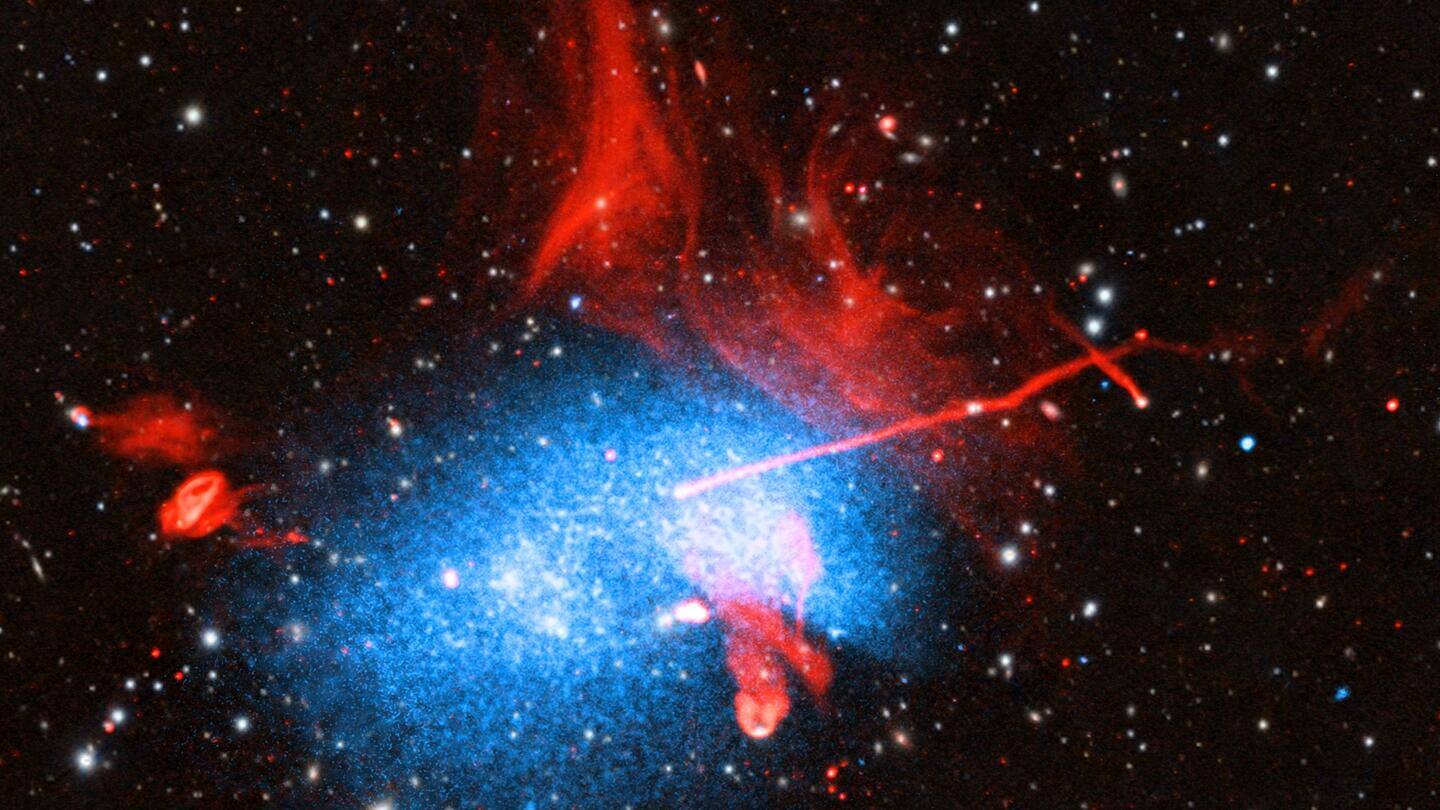
NASA's Chandra Observatory captures chaotic galaxy merger
What's the story
Astronomers have captured a striking image of ongoing collisions and mergers between at least three galaxy clusters, measuring 5.5 million light-years across.
Data from NASA's Chandra X-ray Observatory, ESA's XMM-Newton, and three radio telescopes helped researchers understand what was going on in the "chaotic scene."
The massive galaxy cluster taking shape from this collision is called Abell 2256, located 780 million light-years away.
Context
Why does this story matter?
Galaxy clusters are some of the biggest structures in the universe. These clusters contain hundreds or even thousands of individual galaxies and contain mixtures of hot gas and dark matter.
Collisions and mergers, like the massive knot-like collision Abell 2256, are the primary ways that galaxy clusters grow. They can also act as the largest particle accelerators in the universe.
About the image
The image is a combination of data from different telescopes
X-ray data from Chandra and XMM has been combined in blue in the vibrant composite image of Abell 2256.
Meanwhile, the radio data collected by the Giant Metrewave Radio Telescope (GMRT), the Low Frequency Array (LOFAR), and the Karl G. Jansky Very Large Array (VLA) is in red.
Further, the optical and infrared data from Pan-STARRs is in white and pale yellow.
Explanation
Galaxy clusters contain large reservoirs of superheated gas
The information gathered by each telescope tells a different part of the story.
In addition to being one of the largest structures in the universe, galaxy clusters contain enormous reservoirs of superheated gas. And 'superheated' here implies temperatures of several million degrees Fahrenheit.
What makes X-ray telescopes like Chandra and XMM important is that only these telescopes can peer through such hot gases.
Radio emissions
The radio signals originate from various sources
Coming to radio signals, they originate from a more complex set of sources.
The first is the galaxies, in which the radio signals are generated by particles "blasting away in jets from supermassive black holes" located at their centers.
These jets could be shot into space in straight and narrow lines, as seen emanating from the core of Abell 2256 in the image.
Information
The jets also give rise to complex shapes and filaments
In some cases, these jets could interact with the gas, creating complex shapes and filaments, which are seen as red blotches toward the bottom of the image and in the middle left.
Details
Abell 2256 lies in the Ursa Minor constellation
"At the upper right-hand edge of the oval-shaped giant cluster are sweeping sheets of red, which resemble lapping flames or licks of red hair," said NASA in its blog post.
"These relics are the results of shockwaves, likely generated by the collision of gas from the different clusters."
This colliding galaxy cluster Abell 2256 lies in the Ursa Minor constellation.